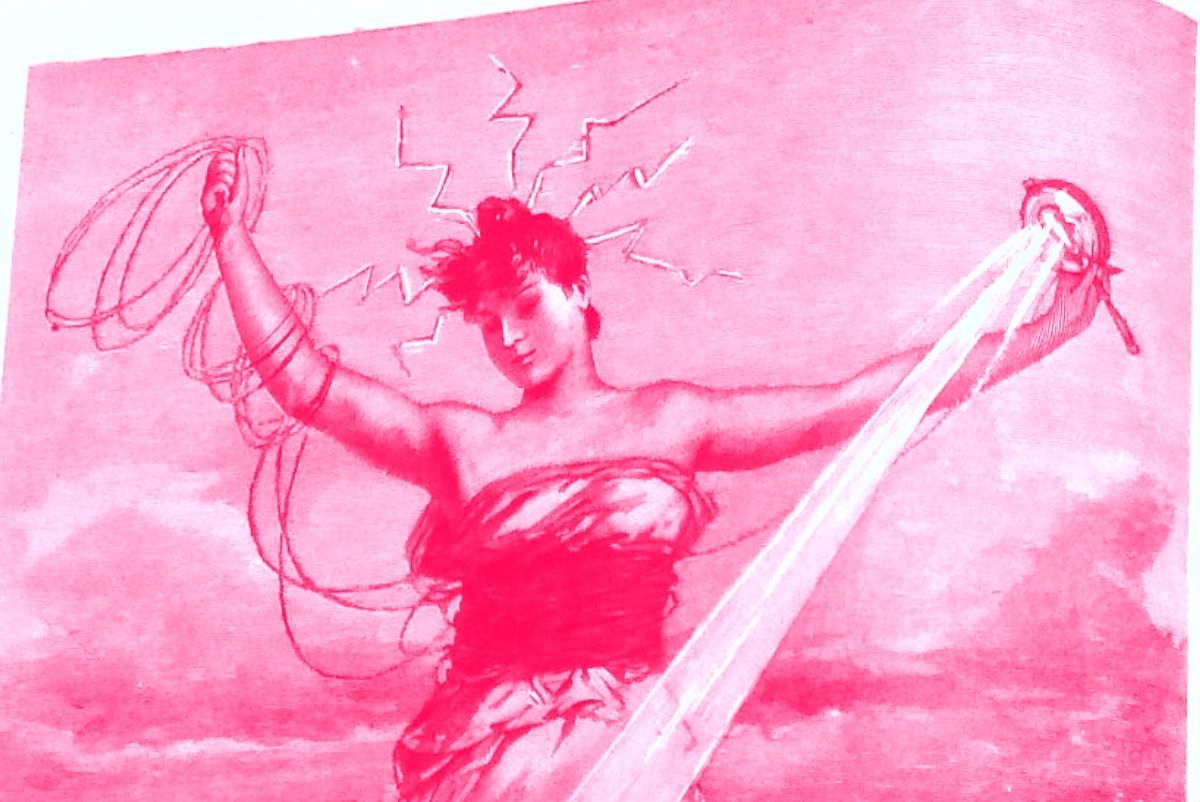Ode To Wi-Fi
Wi-Fi is like the weather
In and out
It shines its fickle light
Is it radio or wave
That routes its
Way into our hearts
Wi-Fi should be a Greek god
Not god of thunder
Thank you, Zeus
But a French goddess like
Electricity at the Paris Expo
Eighteen-eighty-one
Crowned in cords
She carried a beacon
Wore a corona of current*
The statue of liberty
Also French
Looks like her
She commemorates
The abolition of slavery
At her feet are broken chains*
She holds a beacon
Like the other
Gods of light and lighting
Are we free?
Free from what
Free from one wire
We are on another wire
We are suspended between
Here and not there
Inside a machine
That has no outside
Our gods die
Or are they down
Under where the wires run
And angels fear to tread
–Ticky Kennedy
Poet in Residence
SchoolNewsToday.com
NOTES
* “The man who originated the idea for the Statue of Liberty, the legal thinker Édouard René Lefèbvre de Laboulaye, was also a staunch abolitionist who was known in the United States for his Civil War-era pamphlets defending the Union cause. In an early model of the statue by the French sculptor Frédéric-Auguste Bartholdi from 1870, Lady Liberty is depicted holding broken chains in her left hand, a clear reference to emancipation. Bartholdi based the statue on the Roman goddess Libertas, who is usually depicted wearing a Phrygian cap, traditionally worn by freed Roman slaves. In Bartholdi’s final model, the broken chains in the statue’s hand were replaced with a tablet that represented the rule of law. Bartholdi placed the broken shackle and chains beneath Lady Liberty’s feet. It is far more common to associate the Statue of Liberty with immigration rather than emancipation. But it wasn’t until years after the statue’s dedication that it became an icon for the waves of immigrants seeking a better life in the United States.” From, “New Statue of Liberty Museum Illuminates a Forgotten History,” Julia Jacobs, The New York Times.
** “The Godess of Elecricity: Fée Électricité. Electricity became a consumer product around 1880. But how do you represent a new invisible energy? Through its various representations, the French Goddess of Electricity illustrated the idea of progress and innovation. The first allegorical representations of electricity were based on an existing repertoire: the huge collection of objects, classical statues, and Republican and Masonic symbolism all relating to light. The Light Fairy is one of the oldest known depictions. It seems to be directly inspired by the poem “Stella” by Victor Hugo. The morning star that adorns her brow heralds a new dawn synonymous with progress and freedom. An allegorical depiction from 1881 shows the female figure wrapped in a mess of cables which signifies the development of the first electrical network. The Statue of Liberty, which is actually also an electric beacon, carries a light that is synonymous with man’s progress. Electricity was sometimes depicted as an ambivalent presence, reminiscent of something from science fiction, like the statue described as an ‘untapped indifferent force capable of good as well as evil.’ The image of the Goddess of Electricity continued to evolve over time, eventually disappearing in the first half of the 20th century as electricity became commonplace.” From, “The Goddess of Electricity,” by Damien Kuntz for the Electropolis Museum.
Also Read: Printer Poem
Listen to our podcast, Friday Office Poetry, on Pocket Cast, Spotify, Google Podcasts and Anchor.

